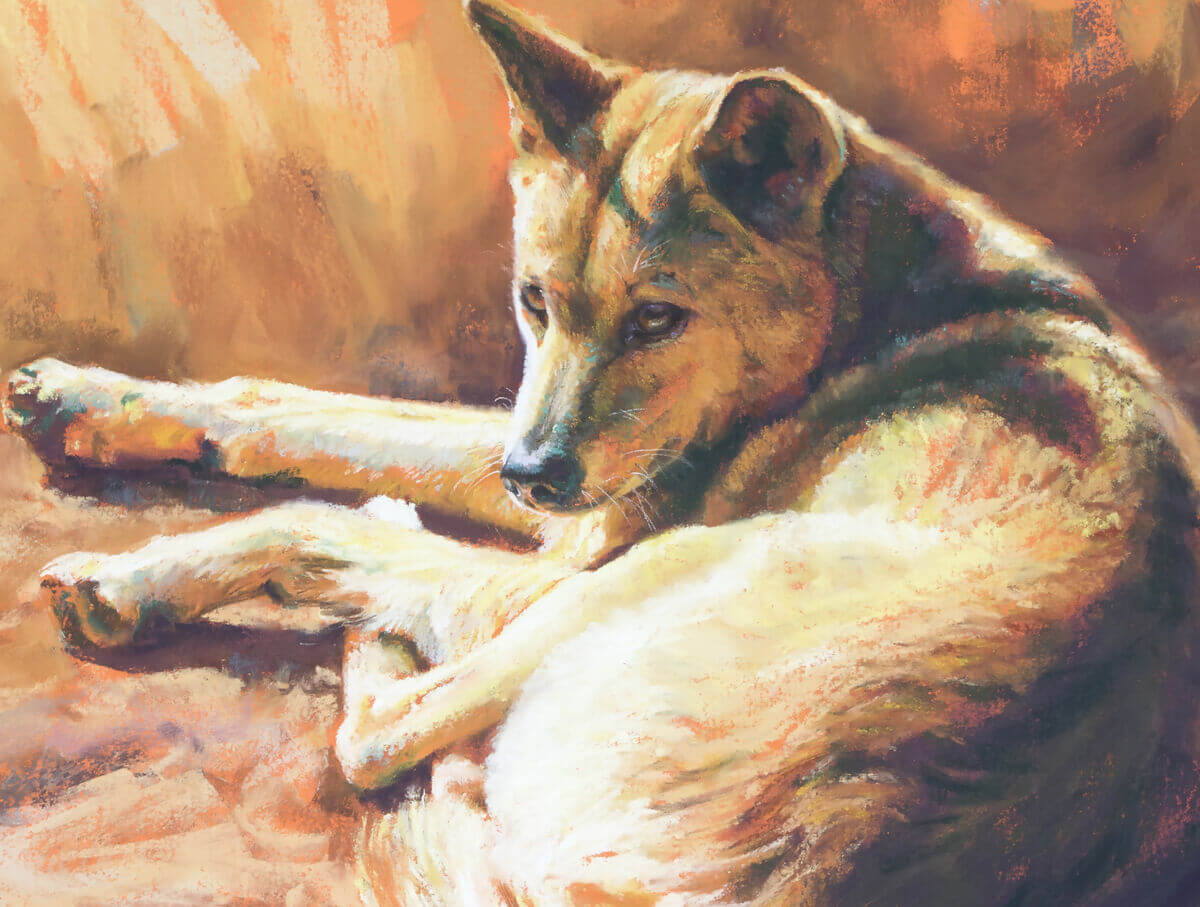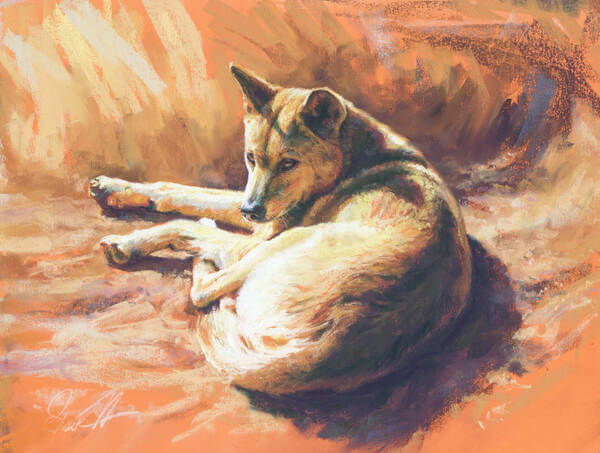Under a southern sun – Dingo
Pastel on Supertooth paper
43 X 66 cm.
Original SOLD
The dingo is Australia’s very own wolf descendant. Now officially identified as canis dingo and definitely not a ‘wild’ domestic dog, the dingo has evolved over the last 10,000 years or more in complete isolation on the huge continent it has come to know as its true home. Nobody is totally sure how they came to be here but dingoes are thought to have crossed via the land bridge from New Guinea share several physiological traits with The New Guinea singing dogs including an annual breeding period. They typically live in small family packs dominated by the single breeding pair who are loyal to each other. They do not bark but do howl melodiously.
Unlike wild domestic dogs, dingoes are a keystone species in the regulation of biodiversity in their various habitats. It has been conclusively proven where dingoes are allowed to remain, ecosystems are much richer in biodiversity than the areas where they have been persecuted to local extinction. And in fact, they actually assist indigenous species by removing feral cats and foxes from their home range. The absence of top order predators worldwide is causing great concern among conservation scientists and efforts are being made to restore populations and to re-introduce these animals as essential for restoration of ecological regions.
Although the indigenous humans of Australia often shared their lives with dingoes they could never be domesticated. Dingos can become loyal to their humans but always retain a healthy mistrust of strangers.
Dingos are threatened by poisoning and shooting still and the pure genetic pool is further diluted by breeding with feral dogs. If Australia is to retain its wonderful dingoes it needs to act seriously to address the problems which are heralding their demise and the shared habitats along with them.
In this pastel painting I wanted to show the light in such a way as to give you a feel for the saturation of the dingo into its home continent…. truly at home under the baking heat of the ‘outback’ sun.



